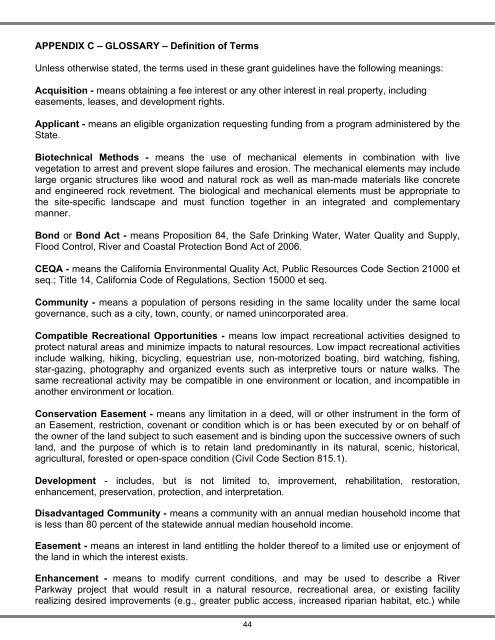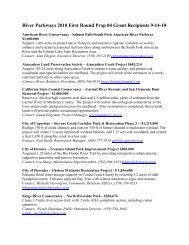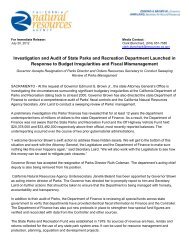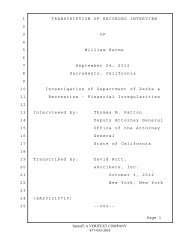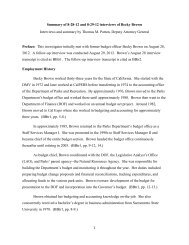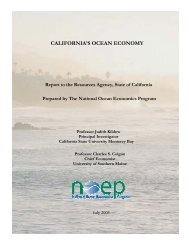california river parkways grant program - California Resources Agency
california river parkways grant program - California Resources Agency
california river parkways grant program - California Resources Agency
Create successful ePaper yourself
Turn your PDF publications into a flip-book with our unique Google optimized e-Paper software.
APPENDIX C – GLOSSARY – Definition of Terms<br />
Unless otherwise stated, the terms used in these <strong>grant</strong> guidelines have the following meanings:<br />
Acquisition - means obtaining a fee interest or any other interest in real property, including<br />
easements, leases, and development rights.<br />
Applicant - means an eligible organization requesting funding from a <strong>program</strong> administered by the<br />
State.<br />
Biotechnical Methods - means the use of mechanical elements in combination with live<br />
vegetation to arrest and prevent slope failures and erosion. The mechanical elements may include<br />
large organic structures like wood and natural rock as well as man-made materials like concrete<br />
and engineered rock revetment. The biological and mechanical elements must be appropriate to<br />
the site-specific landscape and must function together in an integrated and complementary<br />
manner.<br />
Bond or Bond Act - means Proposition 84, the Safe Drinking Water, Water Quality and Supply,<br />
Flood Control, River and Coastal Protection Bond Act of 2006.<br />
CEQA - means the <strong>California</strong> Environmental Quality Act, Public <strong>Resources</strong> Code Section 21000 et<br />
seq.; Title 14, <strong>California</strong> Code of Regulations, Section 15000 et seq.<br />
Community - means a population of persons residing in the same locality under the same local<br />
governance, such as a city, town, county, or named unincorporated area.<br />
Compatible Recreational Opportunities - means low impact recreational activities designed to<br />
protect natural areas and minimize impacts to natural resources. Low impact recreational activities<br />
include walking, hiking, bicycling, equestrian use, non-motorized boating, bird watching, fishing,<br />
star-gazing, photography and organized events such as interpretive tours or nature walks. The<br />
same recreational activity may be compatible in one environment or location, and incompatible in<br />
another environment or location.<br />
Conservation Easement - means any limitation in a deed, will or other instrument in the form of<br />
an Easement, restriction, covenant or condition which is or has been executed by or on behalf of<br />
the owner of the land subject to such easement and is binding upon the successive owners of such<br />
land, and the purpose of which is to retain land predominantly in its natural, scenic, historical,<br />
agricultural, forested or open-space condition (Civil Code Section 815.1).<br />
Development - includes, but is not limited to, improvement, rehabilitation, restoration,<br />
enhancement, preservation, protection, and interpretation.<br />
Disadvantaged Community - means a community with an annual median household income that<br />
is less than 80 percent of the statewide annual median household income.<br />
Easement - means an interest in land entitling the holder thereof to a limited use or enjoyment of<br />
the land in which the interest exists.<br />
Enhancement - means to modify current conditions, and may be used to describe a River<br />
Parkway project that would result in a natural resource, recreational area, or existing facility<br />
realizing desired improvements (e.g., greater public access, increased riparian habitat, etc.) while<br />
44


